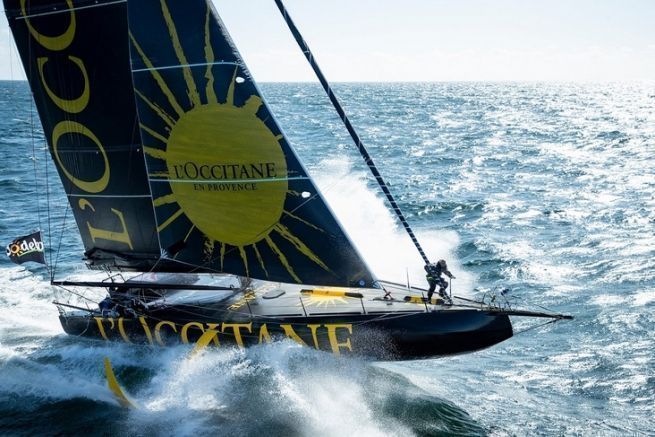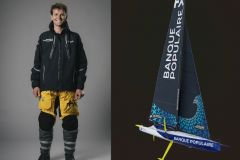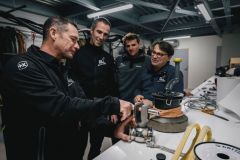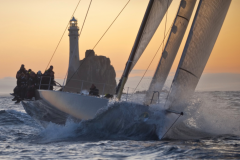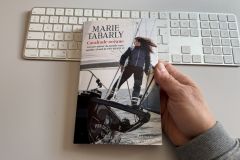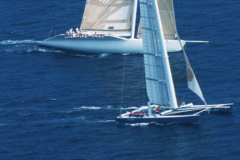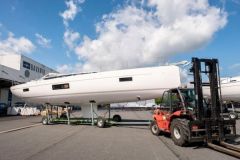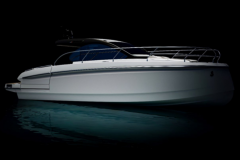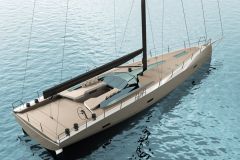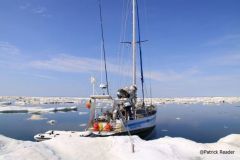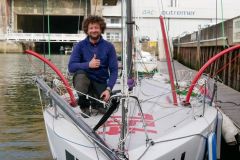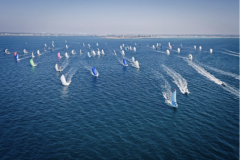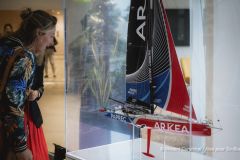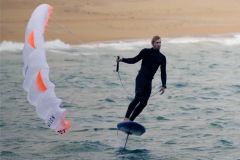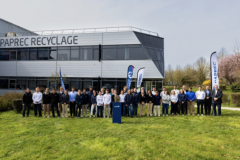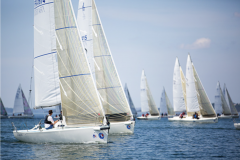A bow of Scow
Very well established on Minis and Class40s, the rounded bow of the Occitane has its origins in the Scow, a dinghy designed in the United States at the beginning of the century. The purpose of this truncated bow is to facilitate planning while limiting loading.
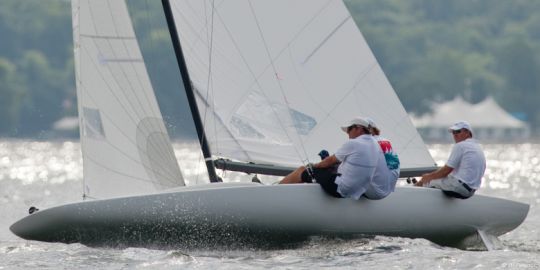
This architectural trend has proven itself on smaller boats, but had never been tried on 60-foot boats. L'Occitane is also a little narrower than her competitors, with a 5.50 m m midship beam.
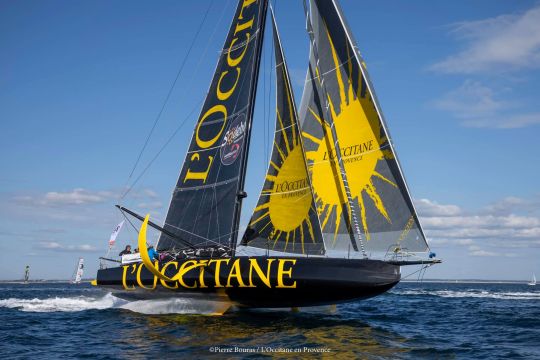
The black yacht in the golden sun has a number of unique features, as it is the first foiler designed by Samuel Manuard, the only one to have been built at the Black Pepper yard, and the first IMOCA built for Armel Tripon.
Unique foils
L'Occitane en Provence has impressed from the outset with its ability to fly low while remaining very stable, thanks to its innovative Dali type foils (a reference to the famous artist's moustaches).
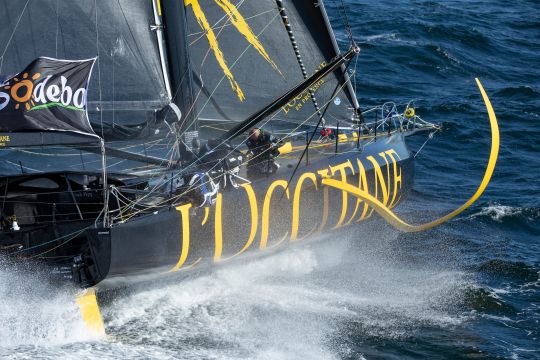
Sam Manuard was assisted by Nat Shaver, who worked on the last America's Cups, in drawing up these plans. L'Occitane's foils are very long and are designed to fly low, but keeping a regular trim (and therefore speed).
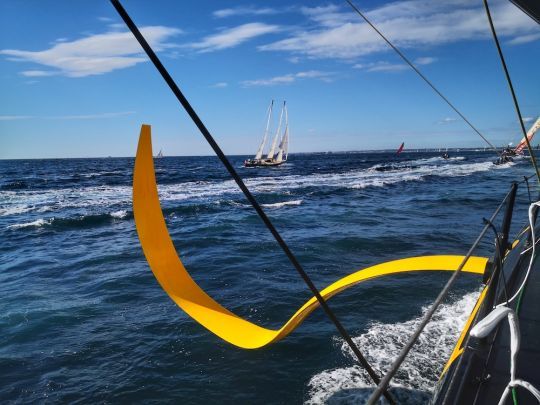
The concept defended by Sam Manuard is based on the fact that the hull must touch the surface of the water (the skimming) without taking off too high.
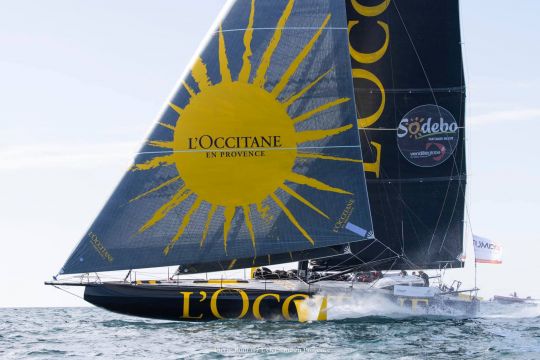
The foils can also be retracted to limit drag in light weather. The fact that they can be fully retracted also makes it possible to remain in archimedean mode in very heavy weather, and thus limit overspeed. L'Occitane is also the only IMOCA boat where the foils are positioned at deck level, whereas they are usually positioned at waterline level. This location favours regular averages rather than top speed.
A revolutionary ship under surveillance
The shape and location of the foils means that the straightening torque of this machine is higher than on other IMOCA machines. The boat stays flat for longer, but the mast and rig are subject to greater stress. The boat is fitted with sensors to be able to know in real time the stresses on the key points (standing rigging, runners, outriggers, foils).
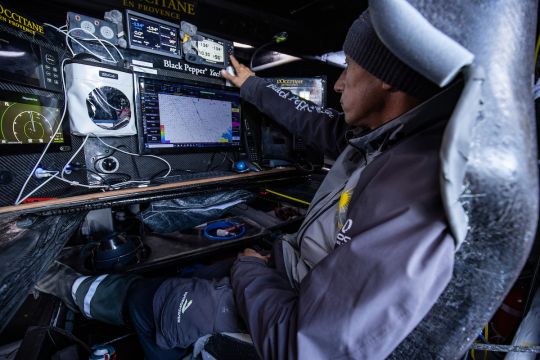
The cockpit has been designed so that the sail bags are hoisted as far back as possible. The engine, usually located in the middle of an IMOCA, is here located behind the mainsheet bar.
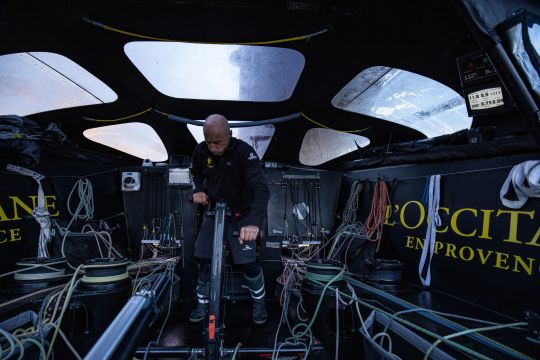
Promising beginnings
Launched in January 2020, the development of L'Occitane in Provence was cut short by the health crisis, but also by a collision with a UFO which immobilised the boat for around ten days. Nevertheless, the machine impressed during the Azimuth challenge and at the start of the Arctic Vendée.
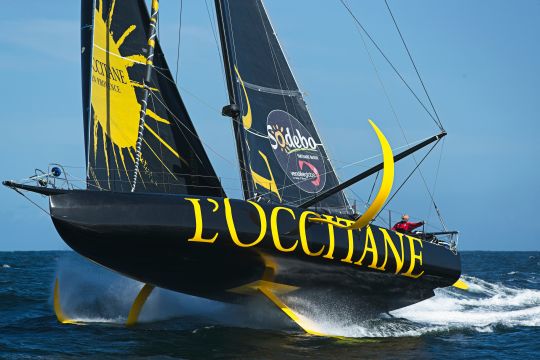
Talented and endowed with a lot of experience in ocean racing, Armel will have lacked the time to make his mount reliable. Whatever the outcome of L'Occitane's first Vendée Globe, it is highly likely that many IMOCA boats will have similar bows in the years to come.
L'Occitane in Provence - Armel Tripon
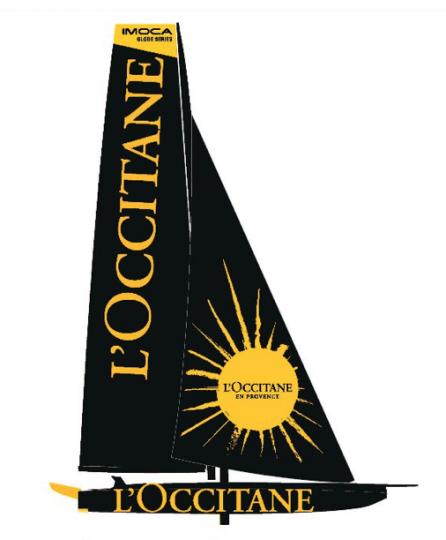
- Sail number: 2
- Architect: Samuel Manuard
- Job-site : Black Pepper
- Launch date: January 31, 2020
- Width: 5.50m
- Displacement (weight): 7.8t
- Presence of foils : Yes
- Sail area upwind : 270m2
- Sail area downwind: 535m2
